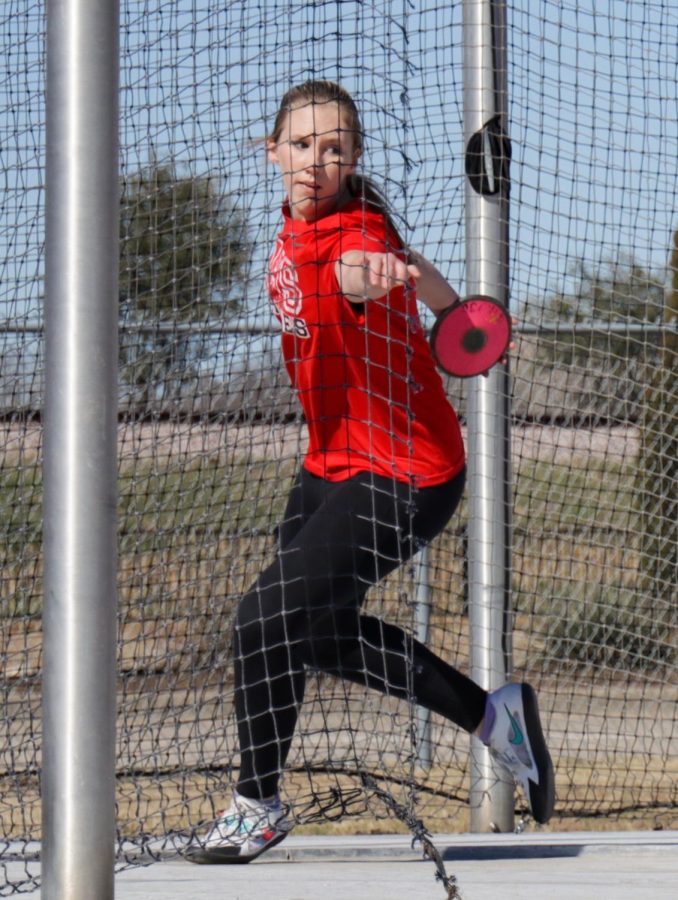Throwing Through History
©The Talon News | Alina Garcia
Cora Crowell competes in discus on February 18, 2022 in Grapevine, Texas.
March 8, 2022
As the season for track and field ripens, many fans crowd stands and local stadiums to watch both collegiate and high school level athletes perform to bring glory to their schools and themselves. Many aspire to go to the Olympics or win a scholarship to a school, and they use their skills in these events to achieve their goals.
One of these events in which athletes use their skills to earn prestige is discus, where each athlete throws a disc in an attempt for it to travel farther than any other on the field. This event is overlooked in light of others such as the pole vault but offers a rich and deep history to those who look into it, which all starts at the oldest Olympics in history.
The custom of discus throwing dates back to somewhere in 700 BCE, where it was originally developed and installed into the original pentathlon games in Greece. The sport was very influential in old times, with a famous statue by sculptor Myron entitled Discobolus from the fifth century garnering much support for the sport both back then and now.
Originally being part of the pentathlon, which is a series of five events each participant must complete in competition, has now been moved to the modern decathlon, being included in a ten-event course over the span of two days.
Discus has been around in the current Olympics since the first modern games in 1896, with its story of survival being nothing short of intriguing. Discus was brought into the modern summer games after a German gymnastics teacher from Magdeburg, Germany named Georg Kohlrausch and his students began practicing the sport.
After the idea of Discus as an event began to spread further, the iconic technique of throwing the discus was created by Frantisek Janda-Suk, an athlete from the current-day Czech Republic. Frantisek developed the method of throwing by examining the previously mentioned Myron statue Discobolus and copying its pose for throwing the discus.
This technique spread to every discus-thrower in the Olympics in a matter of years until it became the primary way of throwing discus. The iconic pose and statue were used heavily in media and advertisements for the Olympic games, and can still be seen to this day.
The culmination of all of these contributions from various countries and time periods has left the world with a great sport that possesses an even more interesting history. Thousands watch and participate in discus each year, and with the right background knowledge, they can enjoy the event just that much more.








